Editor’s note: In celebration of the 50th anniversary of Maharishi Mahesh Yogi’s historic TM Teacher Training Course, attended by the Beatles and other Sixties icons, we bring you this profile, which originally appeared in Enlightenment magazine.

20-year-old Prudence Farrow at Maharishi’s 1968 TM Teacher Training Course in Rishikesh, India (also far left in photo banner above)
It all started so simply. It was 1966, and 18-year-old Prudence Farrow was sitting on a bluff overlooking the Pacific Ocean at her brother’s home in Los Angeles. She was reading a book on meditation when she heard a voice say, “If you’re interested in meditation, I know just the meditation for you.”
The voice was that of Peter Wallace, a friend of her brother. Peter had spent six months traveling through India, where he had met Maharishi Mahesh Yogi and learned the Transcendental Meditation® (TM®) technique. Peter told her how simple and effortless the technique was and yet how profound the experience and benefits could be.
“It was the simplicity of the practice that struck me most,” Prudence said. “I’d been trying different methods of meditation for some time, but they had all been complicated and difficult. When Peter described a simple, natural practice of diving deep within, I knew he was truly onto something.”
So Prudence learned the TM technique at UCLA. After experiencing the benefits of practicing TM for herself, Prudence wanted more. She decided to meet Maharishi and to study with him.
“At that time Maharishi had courses in India,” says Prudence. “He brought people there and they studied for three or four months with him. You meditated for long periods under his guidance.”
On January 23, 1968, three days after her 20th birthday, Prudence traveled with Maharishi from New York to Rishikesh, India, to attend her TM teacher training course. And that’s when the “Dear Prudence” story really began.
“It was the simplicity of the practice that struck me most. I’d been trying different methods of meditation for some time, but they had all been complicated and difficult.” —Prudence Farrow Bruns
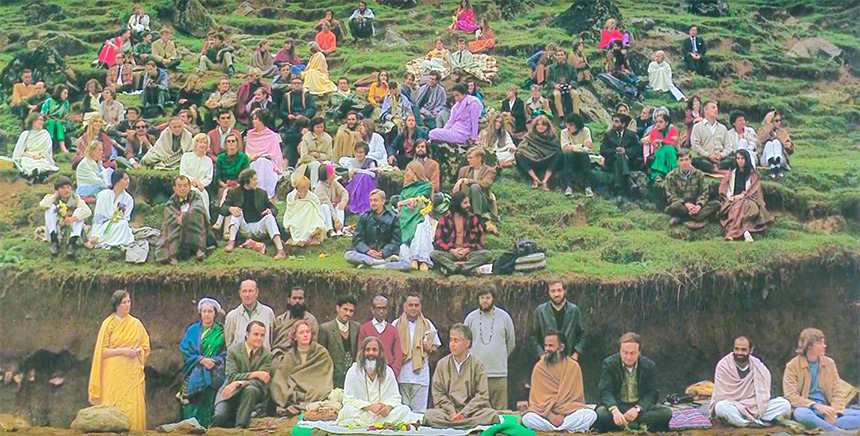
A photo from a TM Teacher Training Course with Maharishi Mahesh Yogi the following year, 1969, in Kashmir
The Beatles Make the Scene
One month after Prudence arrived in Rishikesh, the Beatles showed up to study with Maharishi. While they all spent some time there, John Lennon and George Harrison stayed the longest.
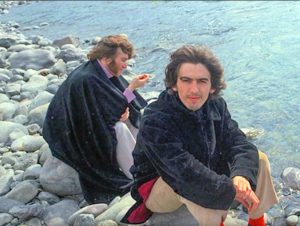
John Lennon and George Harrison on the shore of the Ganges in Rishikesh, 1968
“The Beatles were all very nice, humble, modest, kind, and down-to-earth people,” Prudence remembers. “I was closest to John and George, since they were my ‘course buddies’ during our studies with Maharishi. We were supposed to look out for each other during the course.”
Prudence soon became known for her tendency to keep to herself in her room, focused on her TM practice. “I was deeply immersed in my studies and meditation, locked away in my quarters,” she says. “John, as my course buddy, was concerned and wanted to bring me out of my room to enjoy the experience more.”
John and George would come over to her room and play their guitars, encouraging her to come out and sing with them. It was this experience that became the inspiration for their song “Dear Prudence,” in which John sings, “Dear Prudence, won’t you come out to play?”
Before leaving Rishikesh, George mentioned to Prudence that they had written a song about her, but she had no idea what it was. She didn’t hear the song until it came out on the 1968 album The Beatles, commonly known as the “White Album.”
Prudence’s dedication to her meditation practice did pay off. After four months, she graduated from the course and became one of the first and youngest teachers of the Transcendental Meditation technique at that time.
But that was just the beginning of the “Dear Prudence” story.
John and George would come over to her room and play their guitars, encouraging her to come out and sing with them.
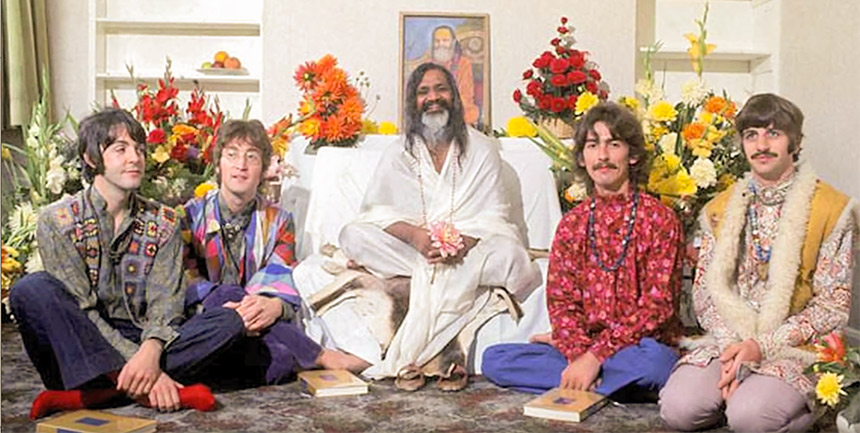
Maharishi Mahesh Yogi with Paul McCartney, John Lennon, George Harrison, and Ringo Starr in Rishikesh, India, 1968
Prudence Comes Out to Play
Once she had completed her teacher training course in India, Prudence definitely came out to play. Over the past 50 years, she’s instructed thousands of people throughout the United States and Canada in the TM technique. She married TM teacher Al Bruns in 1969, and they have three children and four grandchildren.
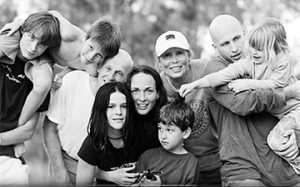
Prudence Farrow Bruns (in cap) with her husband Al and their children and grandchildren
She has produced Hollywood feature films and a play in Manhattan. She was an assistant to the curator of the Theater Collection of the Museum of the City of New York. She has been a magazine writer, and she has written two books.
Prudence earned a B.A., an M.A., and a Ph.D. from the University of California at Berkeley. She received her doctoral degree in 2007, with a focus on South Asian Studies and Sanskrit. She has made presentations to conferences at numerous universities, including Harvard, the University of Texas at Austin, and the University of Hawaii. She has taught courses at UC Berkeley and Rutgers University.
“When you transcend, it allows your heart and mind to balance. And when they’re balanced, that’s when you are really healthy. You are happy.” —Prudence Farrow Bruns
TM and Yoga
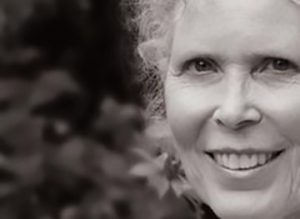
Prudence teaches TM in Florida, including Affiliate Programs in yoga studios
Prudence continues to teach the TM technique in Florida. In fact, she’s the most successful teacher in the United States at setting up Affiliate Programs in yoga studios. Maybe that’s not so surprising, considering that she’s a lifelong yoga practitioner and opened a yoga institute in Boston back in 1967.
Maharishi Foundation, the nonprofit TM organization, created the Affiliate Program to bring TM to yoga studios and fitness centers. Once a studio becomes an Affiliate, their members can learn TM at a reduced course fee, and the studio receives a share of the income. Everyone benefits—the new TM student, the yoga studio, and the local TM teachers.
“I do think that Transcendental Meditation is—of the meditations that are available to us—the most direct, and the simplest,” says Prudence. “When you meditate, when you transcend, it allows your heart and mind to balance. And when they’re balanced, that’s when you are really healthy. You are happy. You’re happy mentally, happy emotionally, and happy spiritually. Those three are all components of what make a human being, so that connection to transcendence is absolutely necessary for health.”
Creating a Better World
“The years of meditating have enriched my life so much,” Prudence says. “And that’s why at this point in my life, I’m giving back. We need a better world. We need people to be more conscious, to be more evolved. And expanding the mind like TM does is absolutely vital to bring about stronger people. If you can strengthen people inside, you’ve changed the world.”
So even today, 50 years later, the “Dear Prudence” story continues.
“We need a better world… And expanding the mind like TM does is absolutely vital to bring about stronger people. If you can strengthen people inside, you’ve changed the world.” —Prudence Farrow Bruns
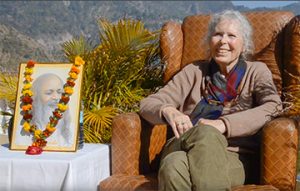
Prudence Farrow Bruns, Ph.D., is the author of many books and articles, both popular and academic. She originated and co-produced Widow’s Peak, a feature film starring her sister Mia Farrow. She and her husband Al Bruns, Ph.D., live in Seagrove, Florida, where they teach the TM technique.
Editor’s note: An earlier caption for the second inset photo for this article has been corrected; it originally identified the year and location as 1968 and Rishikesh, India.

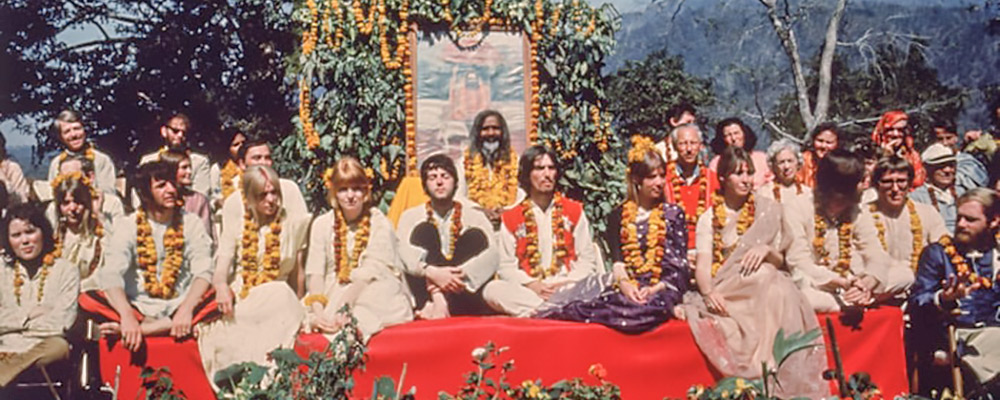
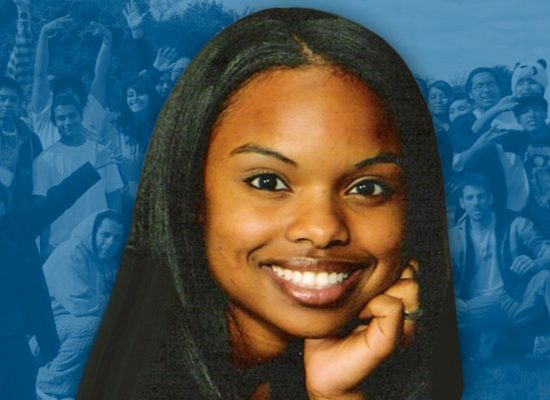

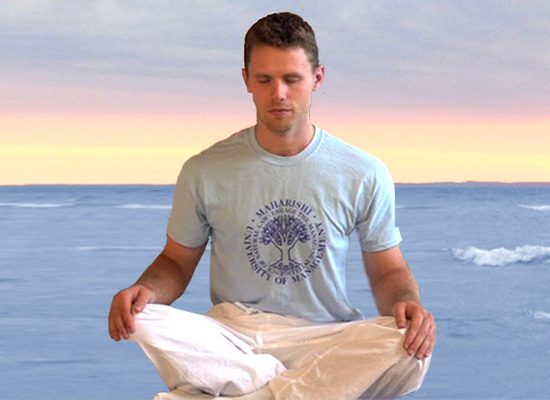
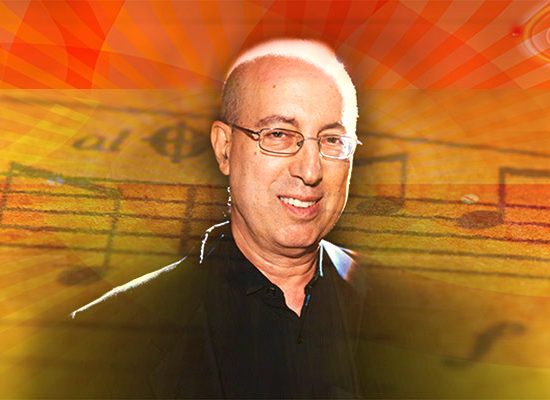
I love the article; interesting to know the inspiration behind ‘Dear Prudence’ which is ‘playing in my head’ as I write!
Very Nice article! I live near Seagrove Beach and my 27 year old daughter is interested in learning TM. I have been practicing TM for 46 years & know the many benefits!! What is the cost to learn TM? And are there any special discounts available for my daughter? Thank you!!
Congratulations on your longtime TM practice and benefits! That’s wonderful that your daughter is interested in learning TM as well. Instruction fees vary according to circumstances, so the best thing to do is contact your local TM Center. I believe the NW Florida TM Center is closest to you: https://enjoy.tm.org/nw-florida. Prudence and Al Bruns are the TM instructors there, and Prudence’s story is featured in this month’s issue: https://enjoytmnews.org/dear-prudence-story/ To find other TM Centers in your region, visit https://enjoy.tm.org/group/guest/events Enjoy!!
Good works
Dear Prudy.
And I remember when I started TM with your mother, and you were my flower girl. Give my best to Al.
Love & Jai Guru Dev,
Don Snow
Thank you